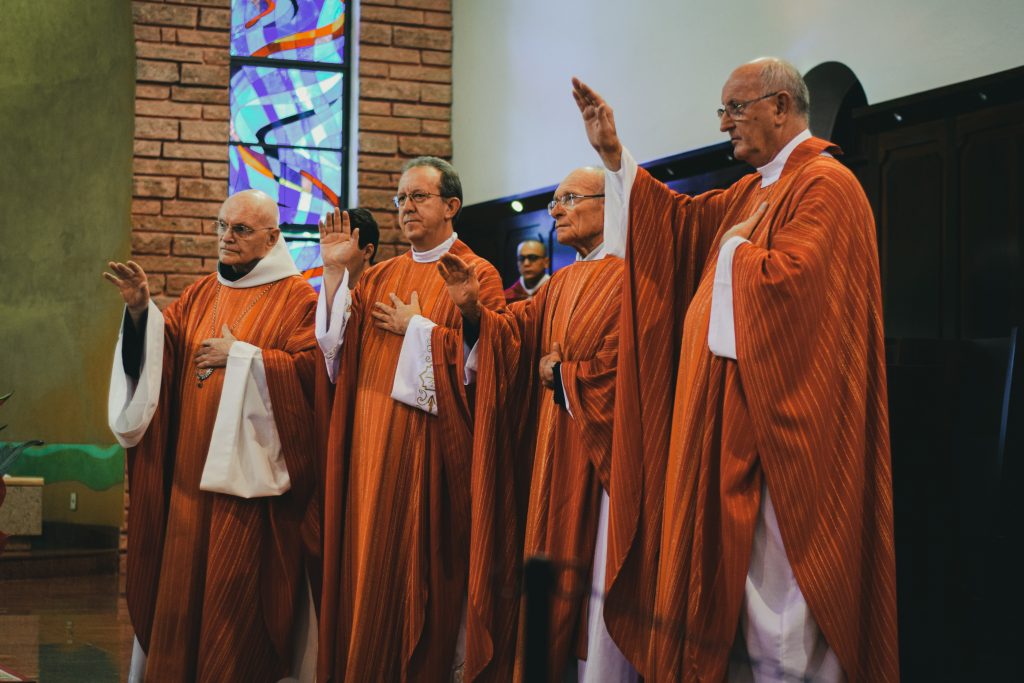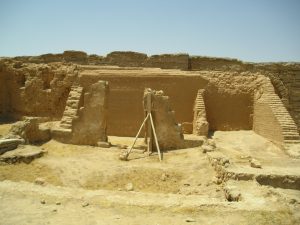Parishes
Maybe Christine Schenk, CSJ, had the same problem I had this week. There is so much going on, from the Conventions to the Centenary, that I need a nice, quiet topic. What have I missed in this summer of news breaking all the time?

Parishes. Specifically, the July 20 papal Instruction on parishes. It’s especially relevant in Philadelphia right now. “Unrest in Pews” is the most recent article about the installation of a Neo-Catechumenal Way pastor in St. Michael parish.
I am especially fond of St. Michael because my 100-year old grandmother always recognized me enough to say “Dutch Pete’s” and “Irish Mike’s” about two Philadelphia parishes; she was married in Dutch Pete’s before the turn of the twentieth century and moved to New Jersey soon after.
But the first article alarmed me more. Members of a traditionally Black parish, St. Charles Borromeo, got to the point of protest about a “parish administrator.” Removal of the black cross used during Mass was only the most symbolic indication of the erasure the Black parishioners felt, as renovations were made and liturgy changed without their input. “Apartheid” was tossed around.
That seems to be the pattern with these priests, who are being trained in a separate track at the archdiocesan seminary and then deployed here. The “Neocatechumenal Way, a highly structured movement in the church that stresses community and evangelization through lay and clerical ministry,” according to CatholicPhilly.com, was brought to the diocese by former Archbishop Charles Chaput in 2013. “Highly structured” seems to mean a hierarchy in which those who belong are sent to their missions, much like American religious sisters understood “obedience” before Vatican II.
I could go on and on, but I won’t. The article about St. Michael in the Philadelphia Inquirer did a spectacular job about three of these parishes: how they adjusted or not to this movement and what steps the new Archbishop, Nelson Perez, might be taking to investigate the situation. Remember, dear bishop, especially, that Black Lives Matter.
No, I will pivot back to Pope Francis’s July 20 Instruction. When it was published, Joshua McElwee did his usual summary for NCR, situating this document in light of the shortage of male celibate clergy in the United States and the Amazon.
The kind of close textual reading I usually do was done by Robert Mickens in LaCroix International, which is probably why I never got around to it. “While this new document begins promisingly with the fresh and creative language the Jesuit pope employs with such courage and foresight in his 2013 apostolic exhortation, Evangelii gaudium, the text quickly hits the proverbial canonical speed bump… The text’s exhortations in favor of synodality, shared mission, proximity, listening… are empty words its authors try to carefully apply to a no longer useful or attractive model.” Mickens highlights:
“The bishops. The priests. All men. They make the final decision.
I’ve known of parish priests who have refused to even meet with the parish or pastoral council. And they have also made decisions contrary to the advice of the financial board or council. They boast proudly of their right to do so.
The new instruction does nothing to change that. The Congregation for the Clergy says it does not have the authority to do so. In the end, and despite long and cheerful quotes from Pope Francis’s writings and speeches, it doubles down: the parish priest is the one in charge.“
Catholic culture wars played out in 25 pages as well as in the parishes of Philadelphia! We have been formed by Vatican II and grown in our understanding since then. This document reinforces Trent!
But then this Tuesday, Schenk in NCR offers a ray of hope. “With one notable exception, the instruction is essentially ‘all hat and no cattle’ as my Texas friends like to say.” That exception: “It gives laypeople significantly more leverage in canonical appeals to preserve their parish communities.” The link is to a long article with recent history. Over the years Schenk and her successors at FutureChurch have enabled many parishes struggling with closures to fight back.

By Heretiq – Own work, CC BY-SA 2.5, Wikimedia Commons
In Philadelphia, closures are not the issue. Rather, church buildings are changed beyond recognition. Parishes are led by priests who establish a parallel worshipping community. Is this what we want for our churches? Schenk concludes:
By far the most ironic and frustrating part of the July instruction is that it has the temerity to cite St. Paul's letters referring to house churches as "a foretaste of the birth of the first 'Parishes.' " What the instruction conveniently fails to mention is that these house churches were founded by a married couple — Prisca and Aquila — whom Paul calls his "co-workers in Christ Jesus" (Romans 16:3-5; 1 Corinthians 16:19-20). This couple founded house churches (aka proto-parishes) in Corinth, Ephesus and Rome. With Aquila, Prisca probably presided at early eucharistic celebrations held at their house church.
Let us keep that spirit of the small, close, familial community alive by using the term “co-workers” as Schenk suggests. Laity and clergy cooperating in parishes that nourish the faith of all, the leadership of all, the mission of all to be the church of Christ.

3 Responses
Apostolic succession, YES; patriarchal succession, NO.
My miscommunication! The two paragraphs following the bolded quotes are also from Robert Mickens.
After so many years teaching writing, I do not want to plagiarize!
The “Neocatechumenal Way, a highly structured movement in the church that stresses community and evangelization through lay and clerical ministry,”. True it is but the WAY also get’s its priests from the supporting community. The WAY’s seminarians are sent to different local communities and then they are enrolled in the local seminary. The Philadelphia family has a group of seminarians from other parts of the world and these men live and serve in the local community. Some of the increase in numbers in St. Charles seminary are not of the diocese directly but part of the WAY. The boys come from other countries. They come to serve the community and then go to school here.